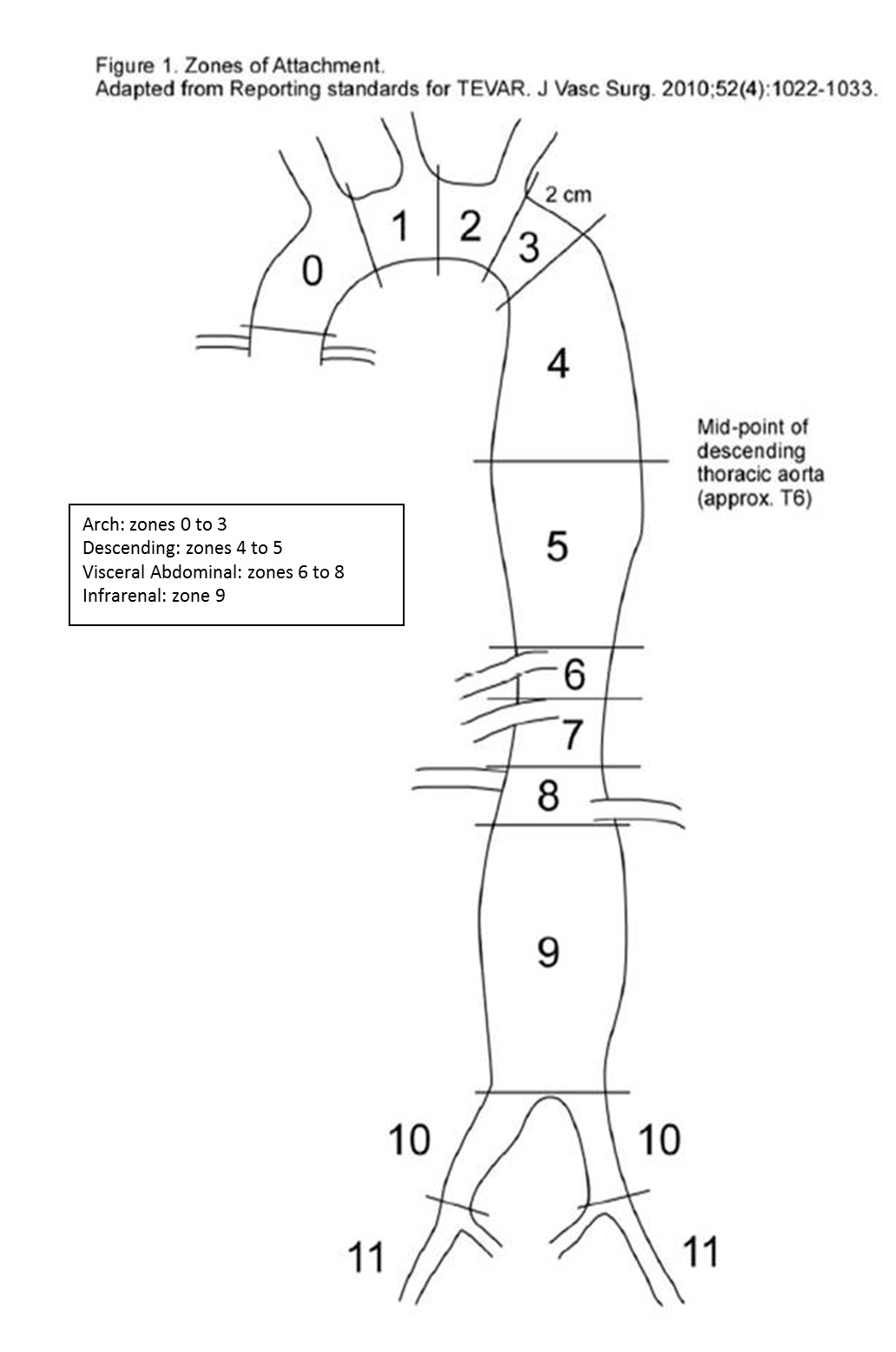Characteristics of Trauma Mortality in Patients with Aortic Injury
Ronald Chang1, Stacy A Drake1, John B Holcomb1, Garrett Phillips2, Charles E Wade1, Kristofer M Charlton-Ouw1
1University of Texas Health Science Center at Houston, Houston, TX;2Department of Health and Human Services City of Houston, Houston, TX
Background: The characteristics of trauma mortality in patients with aortic injury are not well described. Methods: All trauma deaths that occurred in Harris County, Texas in 2014 were retrospectively reviewed, and the subset of patients with aortic injury was selected. The level of aortic injury was defined by zone (0 through 9) and further categorized by aortic region (arch, zones 0 to 2; descending, zones 3 to 5; visceral abdominal, zones 6 to 8; infrarenal, zone 9) (Figure). Injuries in multiple regions were categorized by the most proximal region. Predetermined standardized criteria were used to categorize deaths as preventable, potentially preventable, or non-preventable and to adjudicate causes of death. Univariate analyses were performed. Results: Of 1848 deaths, 193 (10%) had aortic injury, of which 191 (99%) had an autopsy. Injury locations were 59 (30%) arch, 112 (58%) descending, 11 (6%) visceral, and 11 (6%) infrarenal. Most injuries were blunt mechanism (n=127, 66%). Median age was 37 years (IQR 24 to 52 years). There were 178 (92%) non-preventable deaths, 15 (8%) potentially preventable deaths, and none were preventable. Almost all deaths involving arch and/or descending aortic injuries were non-preventable (97%). Potentially preventable deaths were more likely due to penetrating mechanism (76% vs 31%) and after visceral abdominal and/or infrarenal aorta injury (67% vs 7%) (both p<0.05). Of potentially preventable deaths, 7 (47%) died at the scene, while 8 (53%) died after hospital arrival with median time to death 76 minutes after injury. Conclusion: Only 8% of deaths after aortic injury were potentially preventable. Potentially preventable deaths in patients with aortic injury were more often due to penetrating mechanism and injury to the visceral and/or infrarenal aorta. 
Back to 2020 Posters
